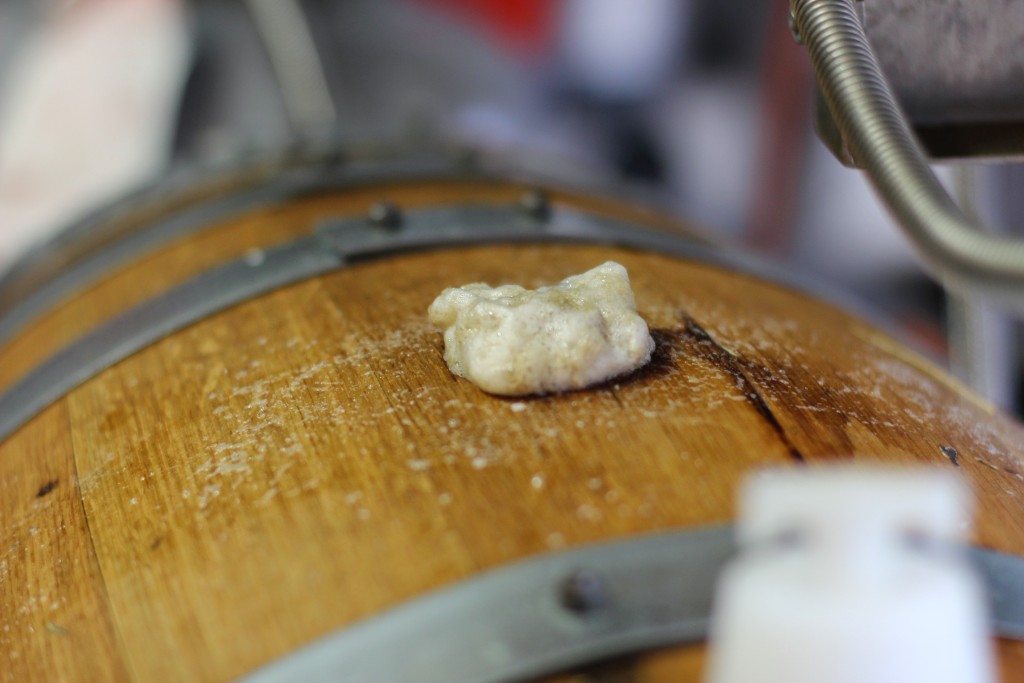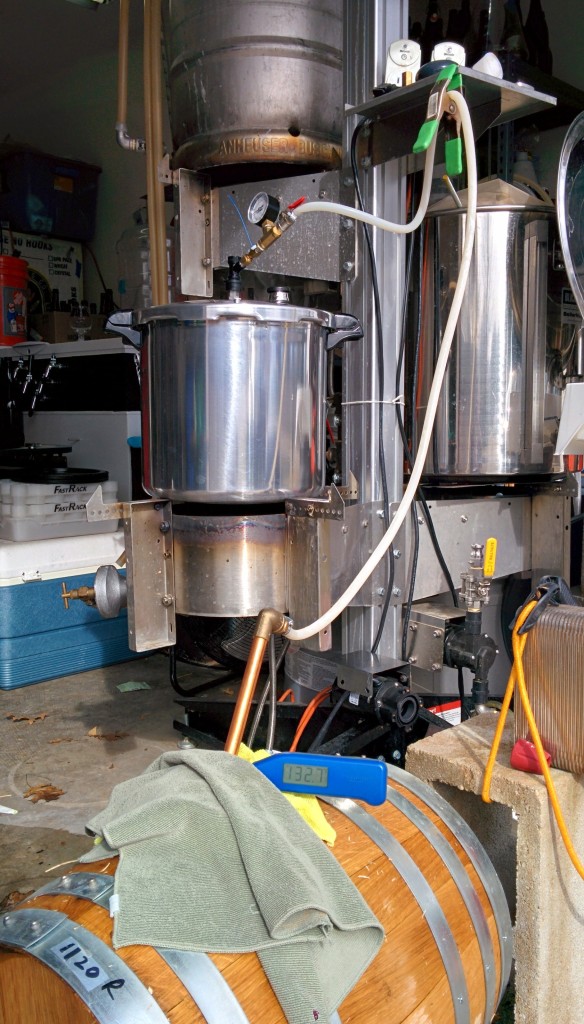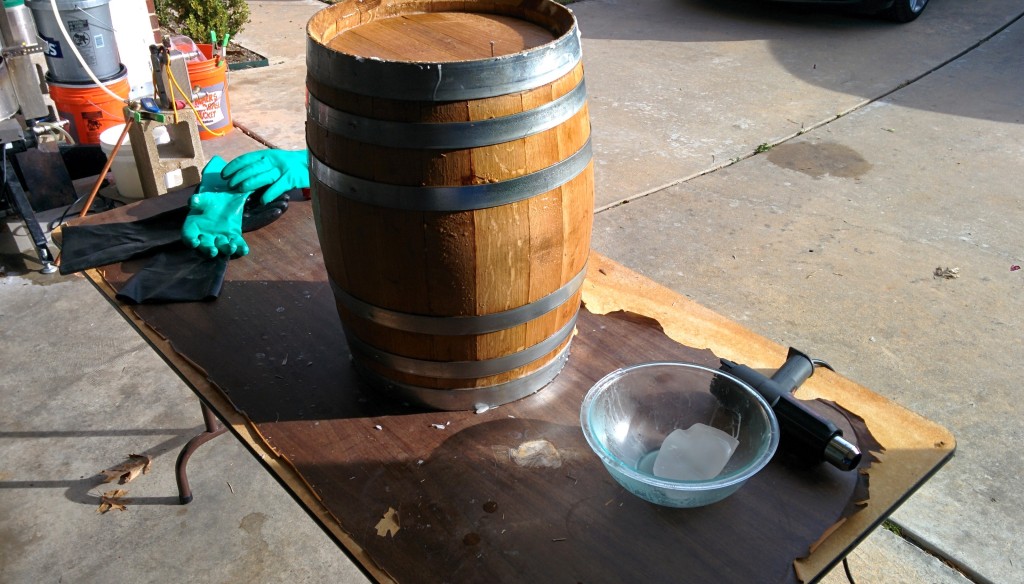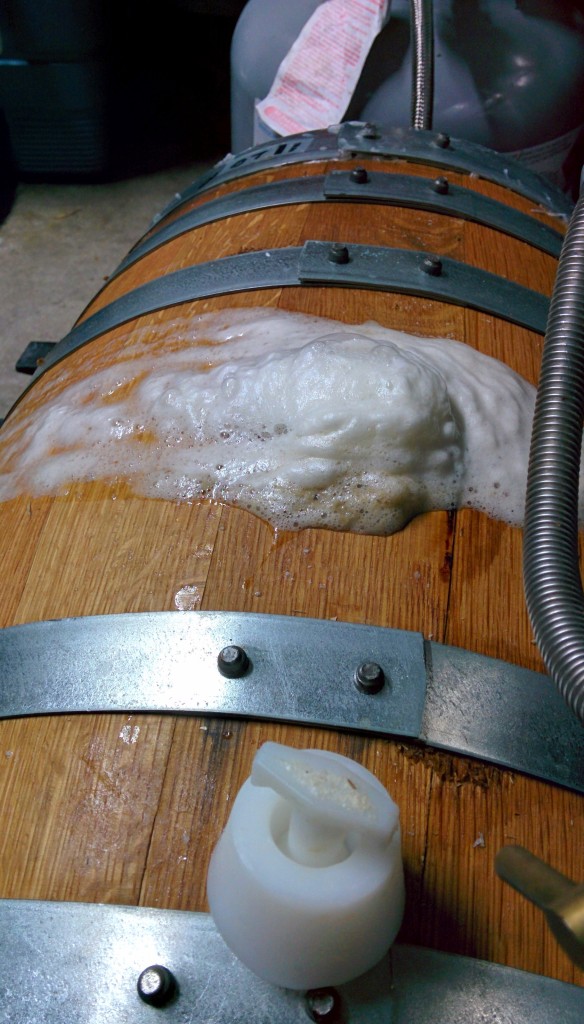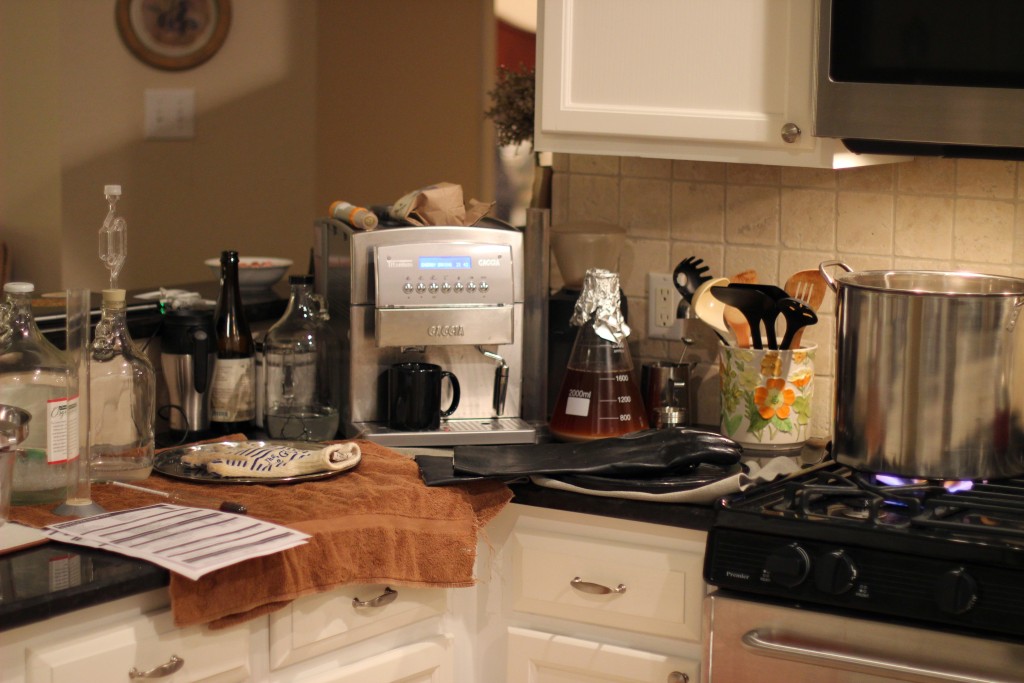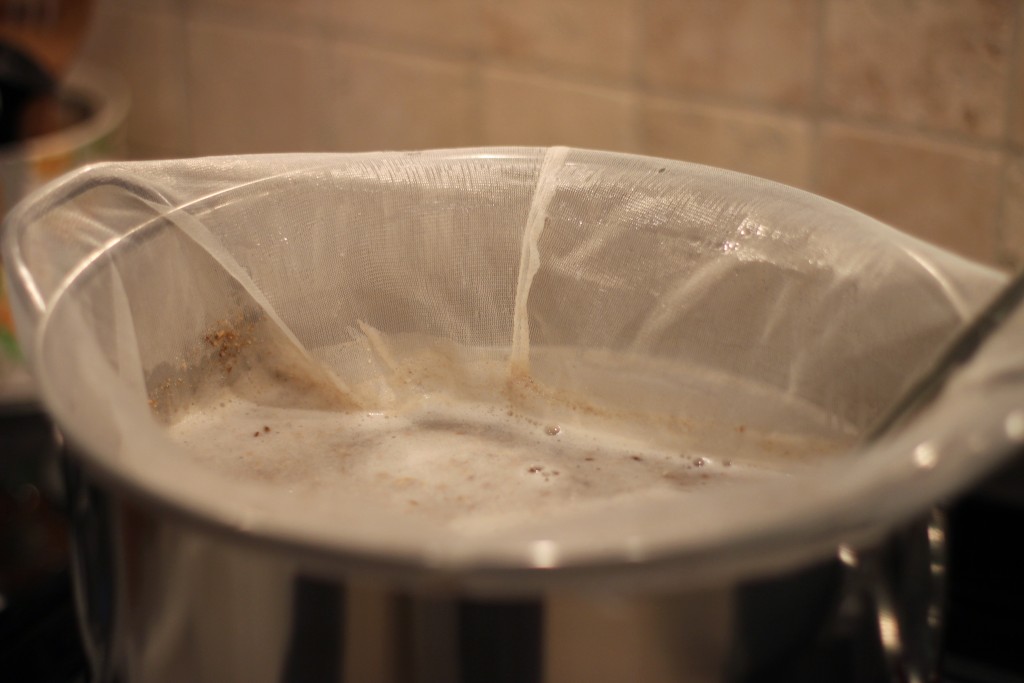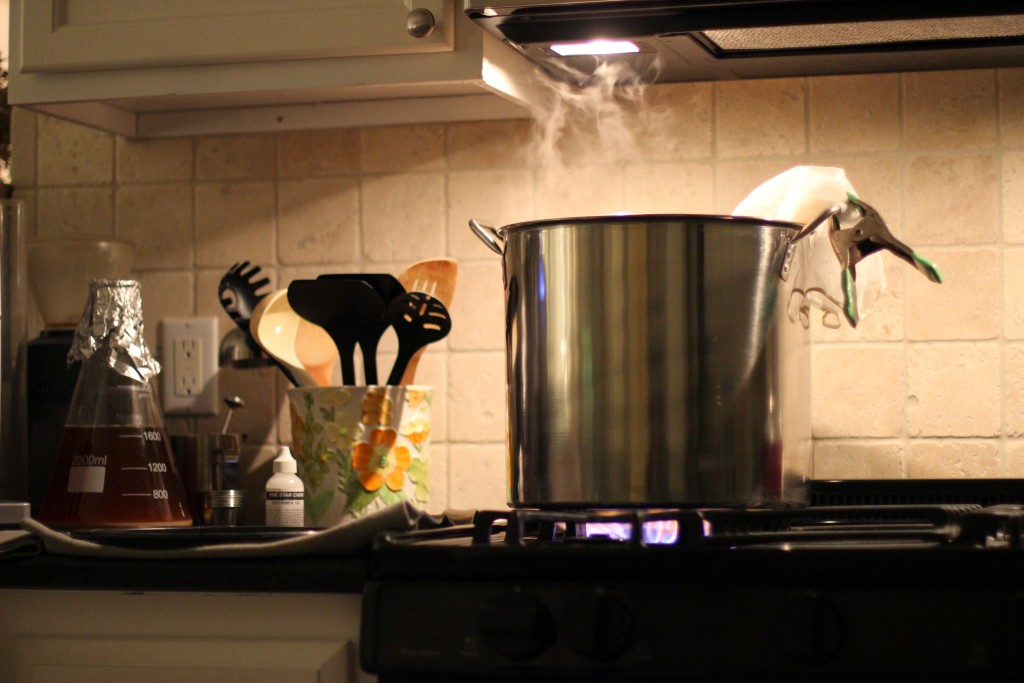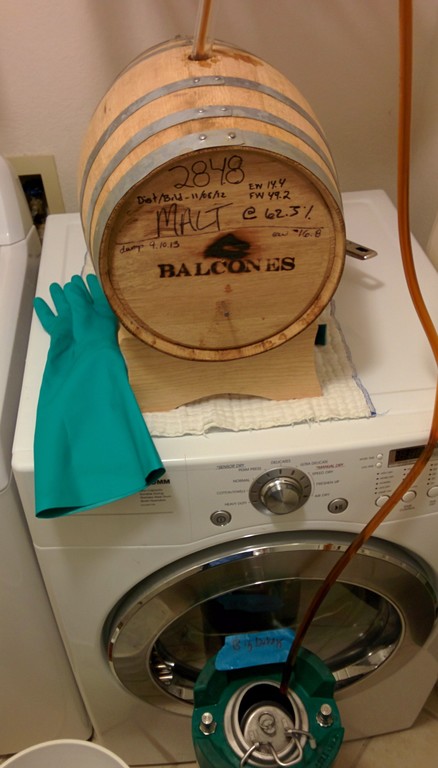
3 gallons of Stone IPA wort boils, one hop addition in.
My first small batch has been quite a success so far. While the whole process wasn’t any shorter, what with all-grain brewing mash, mash-out, boil, chill and pitch. However, the clean up was short and the impact of the brew isn’t 5 or 6 gallons that need to be drunk. Rather, I’ll have 6 750mL bottles to taste, share and critique. If they go well, then it’s an easy scale up to larger batches.
In addition testing out various recipes and temperatures with the Jester King wild culture I really like a really good IPA. I’ve backed away from the double/imperial IPA, mostly because I prefer to get the balance of the beer right without just cranking up the ABV. Most commercial examples don’t get it right and have a huge malt-bomb with hop bitterness just scattered everywhere. Don’t get me wrong, there are some great examples. That said, drinkability is a big thing for me now. I’ve a few criteria that I need to have.
Dry finish. I just can’t work through that much gravity or lingering crystal malts, no matter how bitter the beer. A massive chewy and sugary IPA just isn’t good. The best chewy IPA you can find is Lagunitas. They mash high, but somehow get the attentuation, bitterness and hops (oh those hop aromas) just right.
Massive hop nose. I don’t want to have to hunt for the hops. Either you know what you’re doing with late additions, whirlpooling and packaging, or you don’t and I won’t be able to smell the hops in your beer.
Creative hop bitterness. I’ve made a few hop-bombs of my own that were just over-the-top with bitterness and frankly, they’re not that fun to drink. After aging another month, the bitterness is drinkable, but I’ve lost valuable hop aroma while waiting for things to rebalance.
Color. I really want a straw to pale color and it should be reasonably clear. I don’t really enjoy a really murky IPA. Not because it doesn’t taste good or smell great, but because I know it can be achieved without sacrificing clarity.
A beer that’s been getting this right since forever is Stone IPA. I picked up Stan Heiromynous’s IPA book and read it multiple times. A wealth of information, quite a bit coming from Mitch Steel, head brewer at Stone. Mitch and crew were kind enough to leave the Stone IPA recipe in the book. I’ll assume that this is the best source yet and I’ll skip trying out the various homebrew attempts as well as the apparently not accurate version included in BYO years ago.
The goal here is to dial in the various aspects of the IPA recipe, mash temp, thickness, pH, hoping rates and other parameters. Instead of brewing different IPAs, I’m going to keep dialing this one in until I’ve got it exactly where I want it. Just like Stones. Besides having an impeccable IPA available in a larger batch; it means that when I do want to play around with new hops or grains, I’ve got something I know really well for comparison.
Looking forward to giving this a go and sharing it with some close friends.
Recipe Details
| Batch Size |
Boil Time |
IBU |
SRM |
Est. OG |
Est. FG |
ABV |
| 1 gal |
90 min |
78.6 IBUs |
5.4 SRM |
1.065 |
1.012 |
7.0 % |
|
Actuals |
1.051 |
1.012 |
5.1 % |
Style Details
| Name |
Cat. |
OG Range |
FG Range |
IBU |
SRM |
Carb |
ABV |
| American IPA |
14 B |
1.056 - 1.075 |
1.01 - 1.018 |
40 - 70 |
6 - 15 |
2.2 - 2.7 |
5.5 - 7.5 % |
Fermentables
| Name |
Amount |
% |
| Brewer's Malt, 2-Row, Premium (Great Western) |
2.632 lbs |
96.8 |
| Crystal 15, 2-Row, (Great Western) |
1.39 oz |
3.2 |
Hops
| Name |
Amount |
Time |
Use |
Form |
Alpha % |
| Columbus (Tomahawk) |
0.09 oz |
90 min |
Boil |
Pellet |
14.7 |
| Chinook |
0.11 oz |
60 min |
Boil |
Pellet |
11.8 |
| Centennial |
0.21 oz |
20 min |
Boil |
Pellet |
8.1 |
| Centennial |
0.29 oz |
1.5 day |
Dry Hop |
Pellet |
8.1 |
| Chinook |
0.03 oz |
1.5 day |
Dry Hop |
Pellet |
11.8 |
Miscs
| Name |
Amount |
Time |
Use |
Type |
| Phosphoric |
9.80 ml |
60 min |
Mash |
Water Agent |
| Gypsum (Calcium Sulfate) |
2.10 g |
60 min |
Mash |
Water Agent |
| Calcium Chloride |
0.30 g |
60 min |
Mash |
Water Agent |
| Epsom Salt (MgSO4) |
0.20 g |
60 min |
Mash |
Water Agent |
Yeast
| Name |
Lab |
Attenuation |
Temperature |
| Dry English Ale (WLP007) |
White Labs |
75% |
65°F - 70°F |
Mash
| Step |
Temperature |
Time |
| Saccharification |
147.9°F |
90 min |
| Mash Out |
168°F |
10 min |


